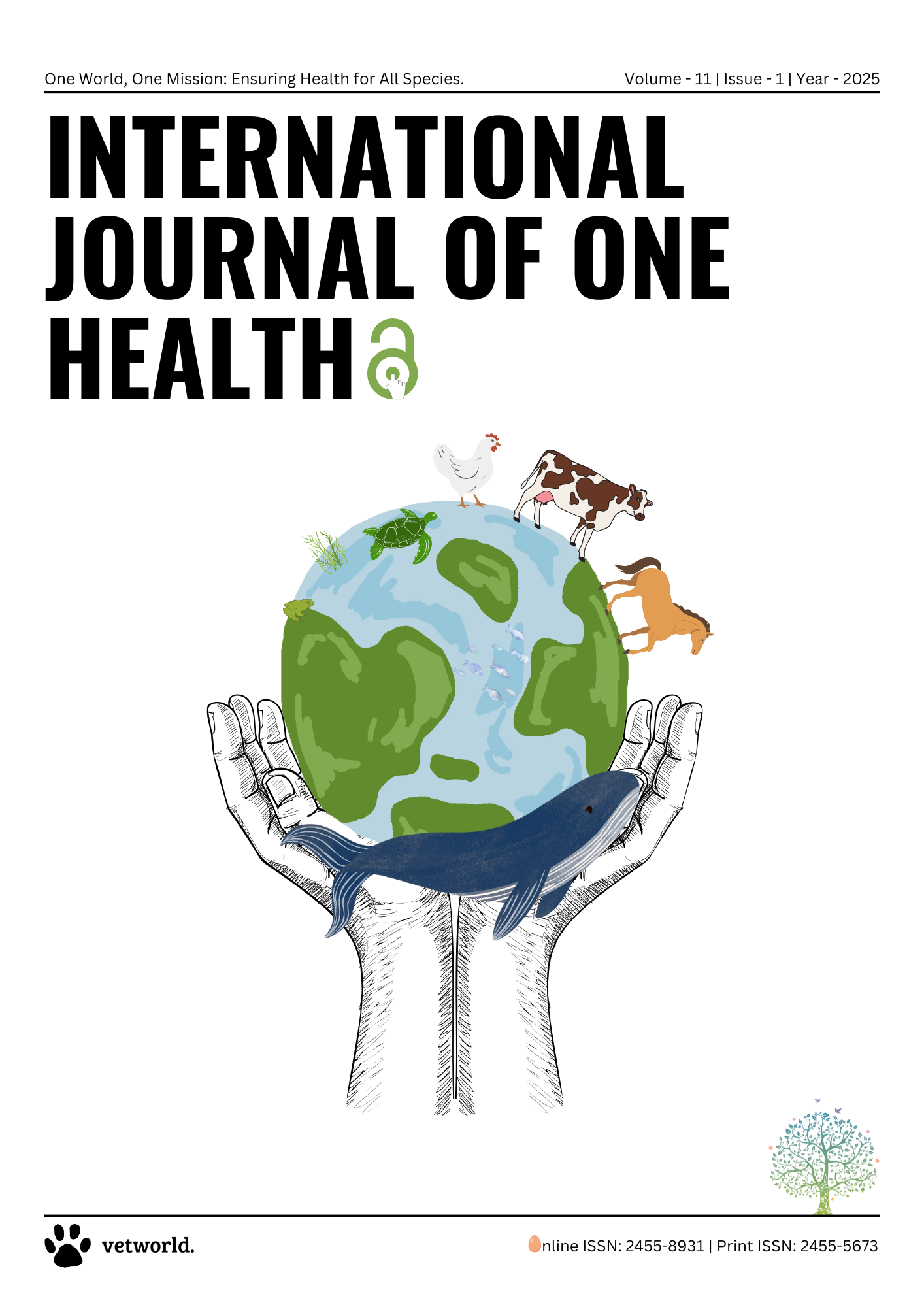Research Article | 08 Aug 2025
Cattle as reservoirs of zoonotic parasitic neglected tropical diseases: A One Health perspective on schistosomiasis and soil-transmitted helminths in an endemic district in Ghana
Yvonne Ashong, Frank T. Aboagye, Emmanuel K. Fiankoh, Christopher Dorcoo, Philomena Jackson, Thelma Koo, Clement A. Damoah, Irene Ayi, Charles Quaye, and Dziedzom K. de Souza
Volume-11 | Issue-2 | Article-1 | https://doi.org/10.14202/vetworld.2025.186-198
Preview Abstract
Zoonotic parasitic infections remain a major public health concern in sub-Saharan Africa, especially where humans and livestock share water sources. Cattle may serve as reservoirs for schistosomiasis and soil-transmitted helminths (STHs), thereby undermining control programs that focus solely on humans. This study applied a One Health lens to investigate the parasitic burden in cattle from peri-urban communities near Weija Lake in the Ga South District of Ghana. A cross-sectional study was conducted across 13 cattle kraals (KRLs) from five endemic communities. Fecal samples (n = 131) were collected by certified veterinary officers and analyzed using sedimentation and flotation techniques. Parasites were identified through light microscopy, and prevalence data were analyzed with 95% confidence intervals. Spatial data and KRL-level variables were also recorded to assess environmental risk factors. Overall, 80.15% (105/131) of cattle were infected with at least one parasite. The most prevalent species was Fasciola spp. (58.77%), followed by Schistosoma spp. (SCH) (45.03%), hookworm (21.37%), and Taenia spp. (14.50%). Mixed infections occurred in 61.90% of cases, with Fasciola spp. SCH combinations accounting for 50% of mixed cases. Notably, Schistosoma mansoni – a typically human parasite – was detected in 1.53% of cattle. Parasite prevalence varied significantly by location, and proximity to water sources significantly influenced the risk of infection. The high prevalence of zoonotic parasites, including human-specific S. mansoni in cattle, underscores the animals’ role in maintaining transmission cycles. These findings support the integration of veterinary interventions with human public health efforts under the One Health framework. Co-targeting cattle in mass deworming campaigns and implementing environmental controls are crucial for the sustainable elimination of neglected tropical diseases.
